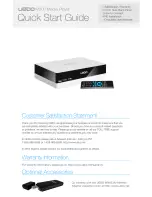
The ramp-up and ramp-down times each refer to the maximum speed.
Note
If rounding times are too long, this can cause the setpoint to be overshot if the setpoint is
reduced abruptly during ramp-up.
Rounding is also effective in the zero crossover; When the direction of rotation is reversed, the
ramp-function generator output is reduced to zero via the initial rounding, the ramp-down time
and the final rounding. Then, the newly inverted setpoint will be approached via the initial
rounding, the ramp-up time and the final rounding.
Rounding times that can be set separately are active in the event of a fast stop (OFF3). The actual
ramp-up/ramp-down times increase with active rounding.
8.3.6
Vector control
Vector control has the following advantages:
• Stability vis-à-vis load and setpoint changes
• Short rise times for setpoint changes to facilitate an improved control response
• Short settling times for load changes to facilitate an improved response to disturbances
• Acceleration and braking are possible with the maximum available torque.
• Motor protection due to variable torque limitation in motor and regenerative mode
• Drive and braking torque controlled independently of the speed
These benefits can even be achieved without speed feedback.
You can use vector control with or without an encoder. A speed encoder is only required in the
following cases:
• Maximum speed accuracy is required.
• The most stringent demands on the dynamic response are required.
• Better command behavior is desired.
• The shortest possible settling times during disturbances are required.
• Prolonged operation at speeds of less than 10% is necessary.
• A high starting torque for approach is required if, for example, 5% of the speed is not achieved
in 10 s.
Operation
8.3 Setpoint channel and closed-loop control
3rd Party LCI Control Upgrade
Operating Instructions, 02/2022, A5E31872818
103
















































